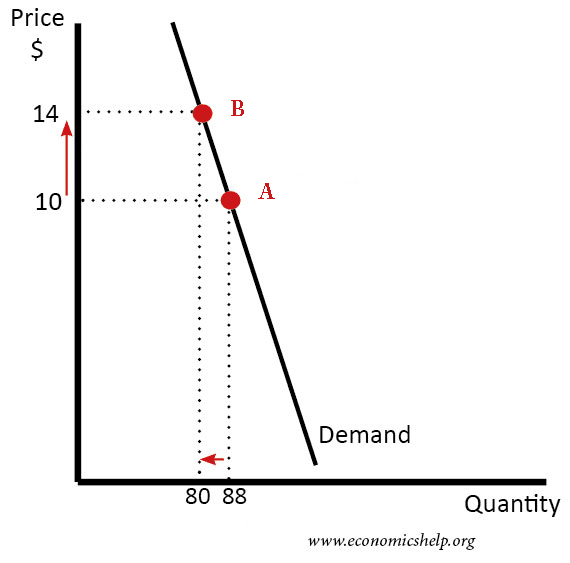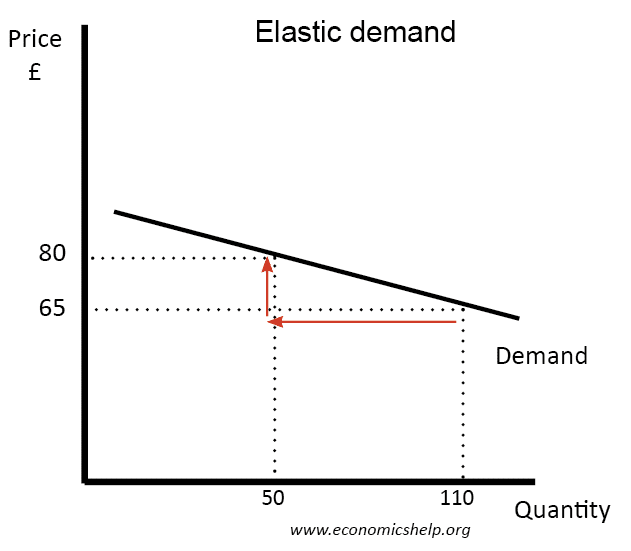Readers Question: What are the major determinants of price elasticity of demand?
Elasticity of demand measures the responsiveness of demand to a change in price.
Inelastic demand means a change in price causes a smaller % change in demand. It means people are unresponsive to changes in price.
Inelastic demand will have some or all of the following characteristics.
- Not many close substitutes (e.g. if you have a car, you need to buy petrol)
- A necessity (getting to work becomes a necessity so you are willing to pay a higher price of petrol)
- A small % of income (if salt increases in price, most people won’t even notice)
- Bought infrequently (tin openers bought infrequently so you don’t worry about higher price)
Readers Question: Use those determinants and your own reasoning in judging whether demand for
each of the following products is elastic or inelastic.
a. Bottled water
There are alternative drinks, but, they are not close substitutes. Some people may not want anything else other than water, demand is fairly inelastic.
b. Toothpaste
There are no substitutes for toothpaste (although I had a 90-year-old aunt who used soap for some reason). It is also a small % of income. therefore inelastic
c. Crest toothpaste
There are many alternative brands of toothpaste, which are quite similar. I imagine brand loyalty to crest toothpaste is fairly weak, therefore elastic
Price Elastic Goods
Goods which are price elastic will have the opposite features. There will be some or all of the following characteristics
- Many substitutes
- Bought frequently
- Luxury goods (not necessities)
- Goods which are very competitive
Related



What determines the elasticity of demand
What determines price elasticity?
1. Price elasticity is higher when close substitutes are available.
2. Price elasticity is higher for narrowly defined goods than broadly defined goods.
3. Price elasticity is higher for luxuries than for necessities.
4. Price elasticity is higher in the long run than the short run